#Studio topcraft
Text
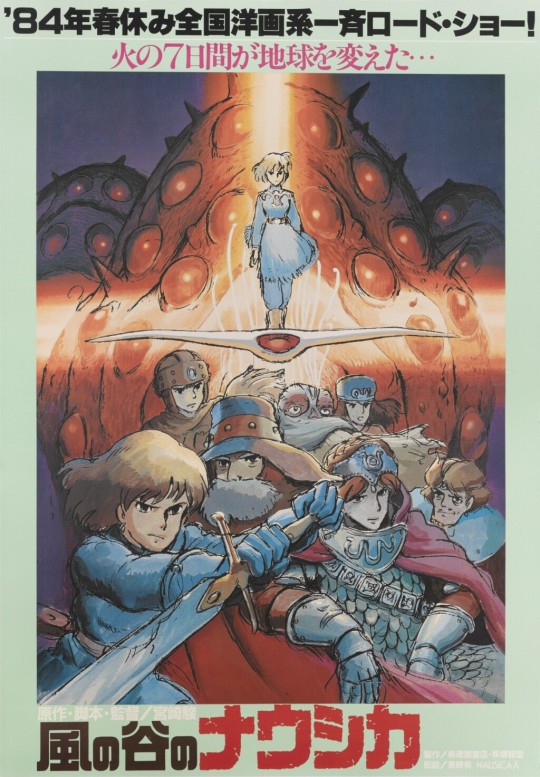
Nausicaa of the Valley of the Wind (1984) promotional poster
#nausicaa of the valley of the wind#80s anime#Hayao Miyazaki#Studio topcraft#studio ghibli#Anime art#Promotional art
196 notes
·
View notes
Text
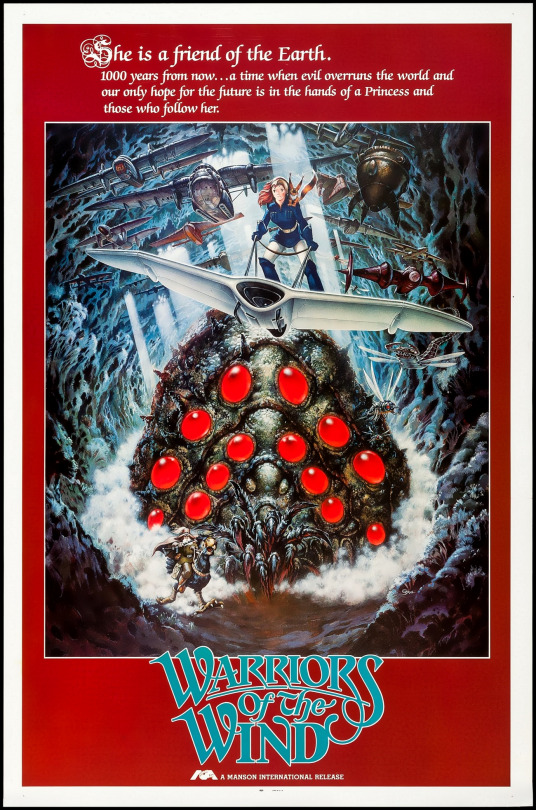
Promotional poster for Manson International's 1985 English adaptation of Nausicaä of the Valley of the Wind, which was retitled as Warriors of the Wind and edited down from 117 minutes to 95 minutes.
#warriors of the wind#nausicaä of the valley of the wind#風の谷のナウシカ#anime#アニメ#english adaptation#promotional poster#studio ghibli#スタジオジブリ#topcraft#トップクラフト#1985
131 notes
·
View notes
Text
It's taken me years to piece together why the dragon from The Last Unicorn was an Eastern style dragon, rather than a more traditional Western style, like you'd see in D&D or GoT. It's because the studio that made it was by the literal predecessor to Studio Ghibli, Topcraft.

Learning that one of my favorites movies was made by them, a couple years ago, was a bit of a trip, but only realizing this fact, now, makes me feel a little silly.
13 notes
·
View notes
Text
So,

this showed up in my ‘for you’ tab and i have to say, this is the least attractive piece of ai-generated content i may have well seen yet
this is untagged, obviously ai-generated “art” being passed off as hand-made art by some absolute tool @gr1mmweeper, who should honestly be ashamed of this. But given how low the quality is, the lack of care even in vetting results, it’s likely they don’t feel any shame at all.
You can tell it’s ai generated because the artstyle on each individual character is distractingly different, not unified or similar at all like it would be if an actual artist was behind this project, the backgrounds are straight fucked, the shadows are all wrong, off-brand scooby has two tongue left teeth, and that pathetic “mystery machine” that was thrown together with no care or consideration, merely fulfilling the objective of matching a colour palette.
you would think other people wouldn’t be so blind, but...

@marshmallsy @juniperhillpatient @hexitca @seeksattentionhatesattention @ursamajor17 @yoohyeontual @hoennislands , among others
You have failed the challenge.
“you did not have to make fred so cute like that” BECAUSE THEY DIDN’T.
This is all bad enough, but to try to do this AI shit with Ghibli...?
undefined
youtube
"I strongly feel that this is an insult to life itself."
“I feel like we are nearing to the end of times. We humans are losing faith in ourselves.”
Leave Studio Ghibli and Topcraft outta this shit. Leave scooby doo out too. Leave algorithm generation out of everything, actually. Before you people get consumed and drag the rest of us down with you.
#ai art#ai generation#studio ghibli#topcraft#hayao miyazaki#toshio suzuki#scooby doo#anime#ai art is art theft#Youtube
64 notes
·
View notes
Text
There are a lot of crazy connections in animation, and here are some of my favorites.
Rudolph the Red-Nosed Reindeer and The Last Unicorn were both produced by Rankin-Bass, and it’s honestly kind of funny considering that when you watch them both back to back.
However, TLU was animated by Topcraft, which was a Japanese studio that later animated Nausicaa of the Valley of the Wind before evolving into Studio Ghibli. So that means there’s a direct link between Rudolph and Princess Mononoke.
Plus, some of RB’s stop-motion animators also worked on a film from 1979 called Nutcracker Fantasy, including Tadahito Mochinaga, the animation director on most of the sixties stuff like Rudolph. It has a very similar style to the stop-motion RB specials, but was actually produced by Sanrio. So there’s also a direct link from Rudolph to Aggretsuko.
Romeo Muller wrote the majority of the Rankin-Bass stuff, but he also did work for Fred Wolf Films, including writing all three Puff the Magic Dragon specials. And Fred Wolf Films also provided the animation for The Mouse and His Child, another Sanrio film.
Oh, and both Rankin-Bass AND Sanrio have a direct link to Osamu Tezuka as well. Like, you probably already know Sanrio produced both Unico films, which were adaptations of Tezuka’s work. But Mushi Productions, the same studio that animated a lot of Tezuka shows like Astro Boy and Kimba the White Lion, animated Frosty the Snowman for Rankin-Bass!
Speaking of Unico, both films were animated by Madhouse, which later made a lot of really edgy and mature anime like Ninja Scroll, Perfect Blue, Death Note, and Black Lagoon.
Before starting up Mushi Productions, Tezuka briefly worked for Toei Animation. Toei is a studio you know best for stuff like Dragon Ball, Sailor Moon, and One Piece, but they also did some outsourced work for some American studios back in the day, including some work for Rankin-Bass (again!), and the eighties My Little Pony series. Oh, and Hayao Miyazaki and Isao Takahata did work there early on, so there’s another Ghibli connection.
Speaking of My Little Pony, the G1 series (along with other Hasbro cartoons like Transformers and G.I. Joe) was produced by Marvel Productions, which was actually directly spun off from DePatie-Freleng Enterprises, the studio that produced both the Pink Panther cartoons and most of the seventies Dr. Seuss specials like The Cat in the Hat and The Lorax. If DePatie-Freleng’s name sounds familiar, that’s because one of the founders was famed Looney Tunes director Friz Freleng. So I guess MLP has a connection to both Dr. Seuss AND Looney Tunes.
I could go on and on, and maybe I will in an eventual reblog, but I think you get the point by now.
#rankin-bass#topcraft#studio ghibli#sanrio#fred wolf films#osamu tezuka#madhouse#mushi production#toei animation#hasbro#marvel productions#depatie-freleng enterprises
28 notes
·
View notes
Text
Here's Why People Are Convinced Studio Ghibli Is Making A Baby Yoda Show
Here’s Why People Are Convinced Studio Ghibli Is Making A Baby Yoda Show
Image: Lucasfilm / Disney
Studio Ghibli, The famous Japanese animation studio behind classics like Princess Mononoke and Spirited Away has spent the past few days teasing a possible collaboration with Lucasfilm and Star Wars on its official Twitter. And there’s some evidence that it might be a Baby Yoda aka Grogu show based on a previous leak and a new tease.
03:51
Halo Infinite Winter…

View On WordPress
#Andor#Baby Yoda#Creative works#culture#Entertainment#Fiction#films#George Lucas#Ghibli#Human Interest#Kiki#Koganei#Kotaku#Lucasfilm#My Neighbor Totoro#star wars#studio ghibli#Tokyo#Topcraft#Western Tokyo#Yoda
0 notes
Text
When it comes to "Sandwich Discourse" type conversations I don't actually care where the lines are drawn but I will select the most ridiculous examples I can.
Pokemon Red and Blue is a metroidvania because of how it locks progression behind upgrades (HMs) to open up new areas, and how nonlinear the midgame is.
Planet of the Apes is an Isekai. I think this is pretty self explanatory.
Goof Troop is an anime. It was by Walt Disney Animated Japan, before the studio was bought out it was Pacific Animation Corporation. Pacific Animation Corporation was originally part of Topcraft. Studio Ghibli also split off from Topcraft, and before the two split they made fucking Nausicaa.
9 notes
·
View notes
Text
Animation Night 168: when Anno was young...
Animation Night has been getting kind of short lately, huh? Gone are the days when we'd marathon three films in a night... for now. Next week is Animation Night 169, and @mogsk has been helping me cook up quite a program to act as a sequel to Animation Night 69. It's time to find out just how much Twitch will let me get away with.

But what about tonight? Well, tonight I figure since we've been talking about Anno this week, it might be fun to put a short program together to show some of his earlier works - as an animator. Truly long-time viewers might remember watching Royal Space Force: The Wings of Honneamise and Gunbuster all the way back on Animation Night 29. But this isn't exactly a reprise of that. We'll revisit Gunbuster on another day. Tonight the subject will be Metal Skin Panic: Madox-01 and Royal Space Force: The Wings of Honneamise.
So here's a brief timeline (largely leaning on SteveM's video here lol). Anno's work on the Daicon III film got him a foot in the door in the industry by impressing Studio Nue enough to invite the Daicon III team to work on Macross. Nue were also in large part fans turned animators, many of them Gundam doujinshi artists. Anno joined what became known as the 'mecha unit' at Artland, working alongside the legendary Ichirō Itano - where he was known for walking around barefoot and talking loudly to himself. A couple of years after Daicon III, the Daicon team reassembled to create a followup film, a lavish effort packed with a ludicrous density of pop-culture references.

Not long after this... Anno dropped out of university, and started bouncing between animation studios in Tokyo. The next big break came when he applied to work on Miyazaki's Nausicaa, a production which was rapidly transforming the outsourcing-oriented studio Topcraft into a gathering of some of the best animators in the business. At Topcraft, Anno's reputation was 'the primal man', sleeping under his desk with the cockroaches and not wearing shoes. But despite his inexperience, he made a good impression on Miyazaki, who assigned him the crucial finale cuts of the God Warrior.
Here we see what is sometimes called the 'Anno explosion', where the laser sweeps across and a massive explosion follows after a beat. Anno was able to handle the complex shading and multiple layers with aplomb...

...if not entirely on schedule. (One anecdote has that he tried to use his work on this sequence to pick up women. Which, to be fair...)
So in the mid 80s, Anno has established himself as a skilled mecha animator who can handle some ludicrously technical scenes. Besides Nausicaa and Macross, you will see him in Megazone 23 Part I, Giant Robo: The Animation, Baoh, Birth - and even Grave of the Fireflies. Any time you wanted mechanical animation or explosions, Anno was definitely a guy to get on the phone. And of course one of his most significant projects was on SDF Macross: Do You Remember Love? where he animated... you guessed it, lots of missiles and explosions.
With all this experience under his belt, Anno was almost ready to return to the newly founded Gainax - what had been Daicon Film. But first - lets check out Metal Skin Panic! MADOX-01. This OVA, made at AIC and Artmic - who made so many of the classic OVAs from this period, it's nuts - was the directorial debut of Shinji Aramaki, whose later CG films we covered back on Animation Night 152. Even back in 1987, Aramaki's love of intricate mechanical detail was on full display - and luckily Anno was on hand to make that vision work, along with the even younger 14-year-old prodigy Kōji Akimoto. (I'm not entirely sure what became of Akimoto. He only has one other anime credit, much later.)

Anno's scenes here prefigure the later similar hyper-detailed mechanical animation in works like Patlabor 2. But what's this OVA actually about? Well, it's a pretty simple story: a mechanic gets trapped inside a mecha suit, and accidentally ends up on a rampage as he's chased by the military (remind you of Roujin Z? or Stink Bomb in Memories?), hoping to unite with his girlfriend Shiori. Ultimately he ends up in a confrontation with an American soldier Lieutenant Kilgore. They fight! Really, we're here for the animation.
So, that brings us to Royal Space Force. The origin is kinda messy. To make a long story short, Daicon Film approached Bandai, hoping to make an OVA based on new Gundam kits. Bandai (and more specifically Shigeru Watanabe) said no to Gundam, but they were interested in this idea for a scifi OVA - and they'd drop them a cool three and a half million dollars to make a film to rival Nausicaa. (Apparently Mamoru Oshii's approval played a big part in that).

So Royal Space Force, what a film. There truly isn't anything quite like it, either in Gainax's oeuvre or anime at large. The closest thing I could compare it to might be the near-future anime series Planetes, which similarly focuses on realistic spaceflight in the context of war and geopolitics - but the tone of these two stories is markedly different. Of all things, it actually most makes me think of the works of Le Guin.
Honneamise is set on a fictional world vaguely resembling eartly 20th Century Earth, in which a country embroiled in war is putting together its world's first, threadbare space programme. It follows aspiring astronaut Shirotsugh Ladatt, who missed his chance to be a pilot and ended up in the sideshow space programme. But he meets a religious girl named Riquinni Nonderaiko who convinces him of the potential of spaceflight in bringing peace to the world.
But this idealism clashes with the reality of a world where the space programme is viewed cynically, a means to an end, with protestors questioning the cost of it and the higherups seeing the rocket launch merely as a means to set up an ambush against their enemies. Shirotsugh increasingly doubts whether the space programme is worthwhile at all. And he himself is definitely not a fully sympathetic protagonist; in one particularly uncomfortable scene he attempts to rape Riquinni (which in its framing reminds me of a similar moment with Shevek in The Dispossessed).

The film is as much as anything an insane work of worldbuilding, full of constructed cultures and small details that sit just a little askew of Earth while still feeling incredibly grounded. The animation in this film is fucking insane - not just Anno's incredible rocket launch and flight sequences, based on a research trip to the States where he watched the Shuttle go up for real - but throughout, in its character animation, it anticipates the 90s 'realist' approach to stylisation. It's just full of loving detail, wordlessly conveying so much about its setting.
Of course, such an ambitious film faced a troubled production. Between the inexperience of Daicon Film Gainax and the difference between what this film was going for and what everything else was going for, and production meddling... it was a mess. Big name composer Ryuichi Sakamoto was pulled in to score the film, won over by its storyboards, but ended up clashing over the timing of scenes, and in the end his score was chopped up and rearranged.
And for their part, Bandai started getting antsy and attempted to impose changes, like insisting on tacking on the subtitle 'The Wings of Honneamise'. They wanted to cut the runtime, cut elements that didn't have toy potential, and so on. They wanted something that would sell toys... and got a deliberately slow, moody art film that leans heavily on nonverbal storytelling.

So it's a weird one... and it didn't sell in its theatrical run. But you know, all those elements that made it a hard sell at first are a perfect recipe for 'cult classic', and for that reason, Honneamise is still remembered today.
In any case, back to Anno. He delivered the most impressive animation of his career. The rocket launch in meticulous detail of course, but equally scenes of planes to rival any in Miyazaki's films (or The Cockpit [AN146]). Of course, he didn't carry it alone! The great realist Toshiyuki Inoue, who'd later be famous for his work at Production I.G. such as Ghost in the Shell, was on it, working for example on astonishingly busy crowd scenes which apparently took a full month to animate. And animators like Fumio Iida, Nobuteru Yuki and Noriasu Yamauchi, brought some of the best work they'd ever done.
All in all, there's nothing quite like Royal Space Force, before or since. So I'm really looking forward to seeing it again.
Animation Night 168 will go live shortly; films will begin at 11pm UK time and continue to about 2am UK time. (Apologies it's so late once more, my sleep is proving troublesome to shift.) We will as usual be at twitch.tv/canmom. I hope to see you there, it's gonna be a real sakuga feast tonight!!
#animation night#anime#animation#hideaki anno#royal space force: the wings of honneamise#metal skin panic: madox-01
21 notes
·
View notes
Text
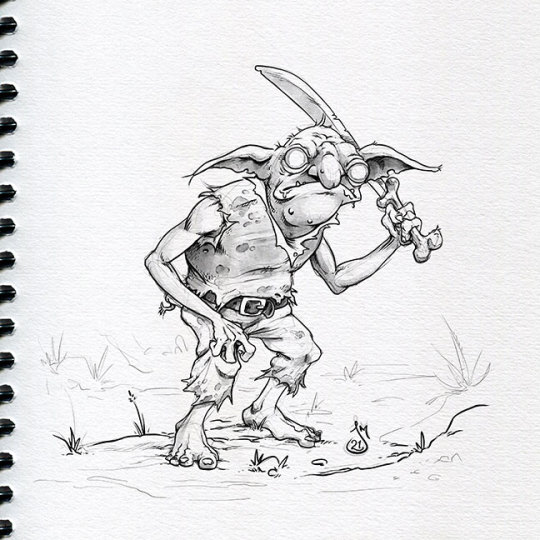
Still crunching away with RiffTrax work, so here's another from #InktobersPast ...a goblin I drew for Goblin Week.
I still really like the subterranean nature of this guy. Kinda like that early Golem by Topcraft in the 1977 animated film.
#Funfact: I learned today that Topcraft's (the Tokyo animation studio that animated The Hobbit and The Last Unicorn) animation team re-formed as Studio Ghibli under Hayao Miyazaki.
#Inktober #DungeonsAndDragons #DandD #dndart #Goblin
15 notes
·
View notes
Text
The Rankin-Bass adaptation of Peter S. Beagle’s fairy tale about the last unicorn in the world and the small band of humans who help her is a melancholy story gorgeously animated by the Japanese studio Topcraft. This was a favorite movie of Mary’s as a kid, but completely unknown to Dennis. This month, we fix that.
Starring Mia Farrow, Alan Arkin, Tammy Grimes, Jeff Bridges, Christopher Lee, Keenan Wynn, Rene Auberjonois, and Angela Lansbury. Written by Peter S. Beagle. Driected by Jules Bass and Arthur Rankin Jr.
Episode 137 - The Last Unicorn
https://sites.libsyn.com/398906/episode-137-the-last-unicorn-1982



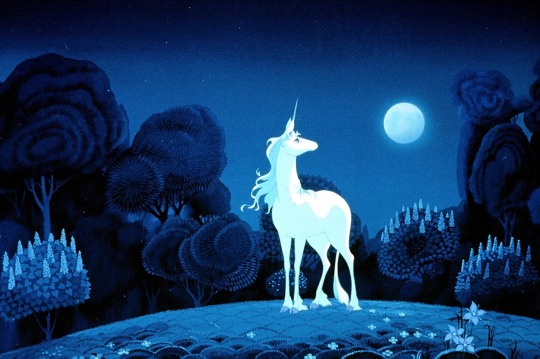


4 notes
·
View notes
Text
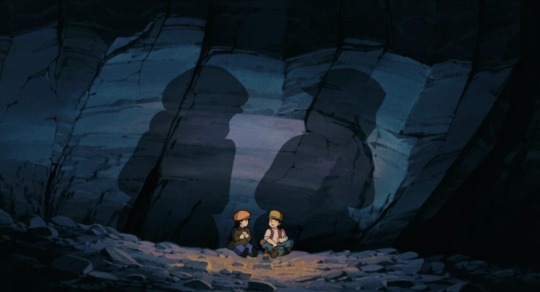



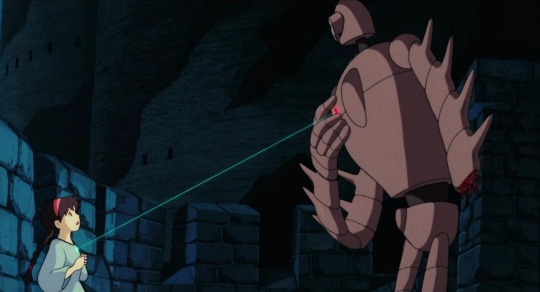
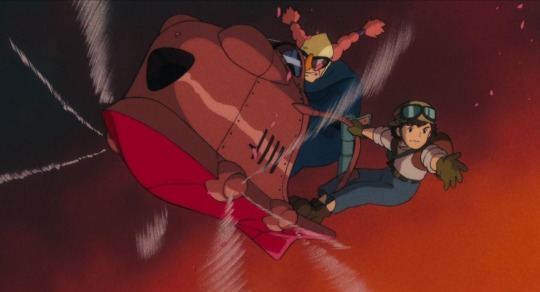

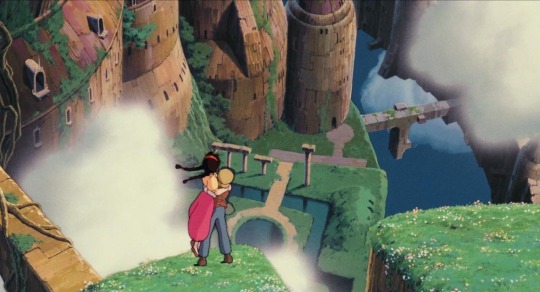
Topcraft Co. was an animation studio that operated in the 70s, and is mostly remembered for its collaborative work with Rankin/Bass Productions (The Hobbit[1977], The Last Unicorn).
The company dissolved in 1985, splitting into two new animation studios; One was Pacific Animation Corp, which continued work with Rankin/Bass, creating ThunderCats and later SilverHawks, before being absorbed by Disney in the 90s. The other company was Studio Ghibli, producing Laputa: Castle in the Sky in 1986.
19 notes
·
View notes
Text
WEEK 1, Sept ? : 7 Days of Making Day 4

On day 4 I was tired so I watched The Last Unicorn. I recently downloaded a bunch of horse-related films, both animated and live-action, and this was top of my list.
I thought the backgrounds were really wonderful. I wish it was preserved a bit better than a dvd upscale, but even then the colors and mood were the strong points of this film.
It has a really traditional narrative arc, and the characters are all basically tropes, but I though that when the movie came together in full it really conveyed a vibe I think has been (probably intentionally) extinguished from all modern animation productions. I was really into it.
The actual animation was pretty weak, it was written and I believe boarded in the U.S but the animation was handled by Japanese studio Topcraft, who would go on the make Nausicaä of the Valley of the Wind, but that is after a lot of talented people join their team, at this point in time they weren't really known for much outside of handling the animation on western films and cartoons, and it shows as the movie was nothing spectacular in terms of motion and was really carried by its art direction.
I did some small horse studies afterward, along with a fan art illustration of the titular Last Unicorn, and decided to try my hand at guache again, this time with some pretty good results.
I think this would be a good medium for sketching color concepts and ideas, it's just I'm very far from comfortable in it, so I don't know if now is the time to start delving into guache regularly.
0 notes
Text
Animações assistidas em 2022 #1
Oi pessoas! Como é que tá o domingo de vocês?
No início do ano eu decidi ver todos os filmes do Studio Ghibli, tanto os que já havia assistido quanto os que ainda fossem inéditos para mim. Decidi então registrar por aqui, para eu tomar nota do que tenho consumido, sobre animação e, expandi a categoria de Studio Ghibli para animação em geral, tanto filmes quanto curtas e séries de estúdios diversos.
A ideia principal é que eu veja com o tempo o tanto de coisa que eu tenho consumido e talvez fazer alguma reflexão sobre o impacto de certas obras na minha vida. Ou simplesmente identificar aquilo que mais me agrada ou não em um desenho animado. :)
Pra começar vou deixar aqui o registro dos filmes do Estúdio Ghibli, que já consegui ver - no total foram 5 - em ordem cronológica:
1. Os Serviços de Entrega da Kiki (1989)

Esse é o meu preferido deste estúdio (até agora). Me identifico bastante com a Kiki, principalemente mais agora que eu passsei por algumas mudanças e tô tomando um outro rumo na vida. É queridos, a independência não é fácil, mas é um caminho bom de se trilhar e cheiro de desafios.
2. A Viagem de Chihiro (2001)

Esse filme é incrível! Na verdade é uma experiência que te faz (pelo menos me fez) refletir sobre as situações da vida e como elas podem influenciar você ou não a agir da maneira certa ou errada. É como se a sua identidade (eu interior) estivesse sendo posta em prova o tempo todo, tanto pelo ambiente quanto pelas pessoas ao seu redor. E sim! É muito difícil você continuar sendo "você mesmo" no meio de tantas interferências.
3. O Castelo Animado (2004)
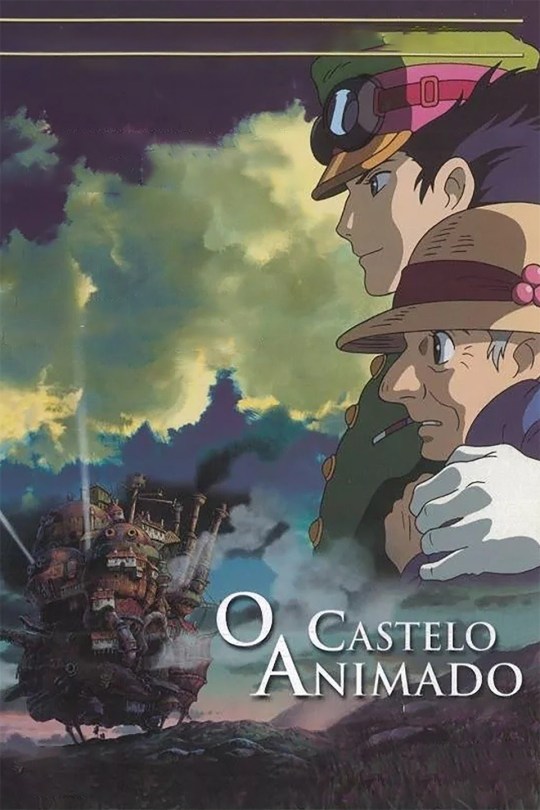
O queridinho do meu amigo Hitallo, ele adora esse filme! Hmmmm... Eu não vou comentar tanto sobre esse, mas fica a dica para quem quiser experimentar e visualizar cada um dos frames da animação pra tentar descobrir do que ele se trata (até hoje eu ainda não sei). Ver a Sofie saindo da sua zona de conforto e se aventurando, provando de uma forma ou de outra a sua integridade, apesar dos apesares, é um colírio para a alma.
4. O Castelo no Céu (1986)

Se não me engano é o primeiro filme do estúdio. Dá pra perceber que ele é bem primordial se comparado aos mais atuais. Também dá pra notar a essência das obras do estúdio presente ali, de maneira não tão direta. Da história eu não gosto tanto mas dos personagens até que sim. É uma aventura! Quem já se deparou perdido nos pensamentos olhando para o céu tem que assistir esse filme. E dentrre outras, ele é LINDO!
5. Nausicaä do Vale do Vento (1984)

O primeiro inédito (para mim) da lista. Esse aqui não é originalmente do Ghibli mas é como se fosse. Aaaaaahhhh! É uma história de princesa do Studio Topcraft Ghibli que finalmente eu gostei (comparada as outras que eu já vi). As definiões de autruísmo foram atualizadas com sucesso no meu dicionário depois que eu vi essa obra. Vale muito à pena.
Pensando aqui que, já estamos no final de Junho e, a média até então é de 1 filme de animação por mês e eu achei foi pouco. Pode ser que eu tenha esquecido de algum outro que eu vi durante esse ano, mas também não tô levando pra essa conta as séries que eu tenho acompanhado paralelamente, que não são poucas.
A medida que eu for lembrando eu vou registrando aqui até mesmo pra ter meu controle.
Até breve! ;)
#studio ghibli#kikis delivery service#nausicaa of the valley of the wind#the castle in the sky#howls moving castle#spirited away#animacoes 2022#silasdraw
1 note
·
View note
Photo


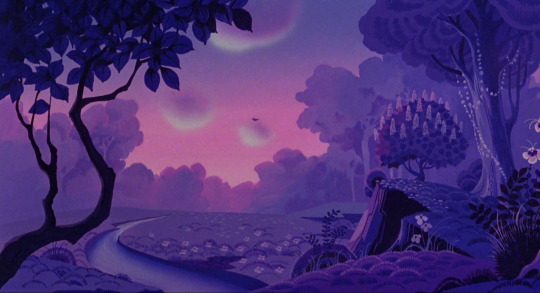

The Last Unicorn (1982)
101 notes
·
View notes
Photo

The Hobbit animated by Topcraft (which became Studio Ghibli)
#the hobbit#1977#arthur rankin jr#jules bass#jrr tolkien#topcraft#studio ghibli#goblin king#gifs#insp
11 notes
·
View notes
Text
Animation Night 111: Studio Ghibli, 1988
Hello friends! It is That Night once again~
Tonight we have an Animation Night whose numeral is all 1s, which seems like some sort of significant occasion - indeed, the next time we can expect this kind of thing will be in another 111 animation nights. So, let’s watch something significant!

So tonight, we’ll be resuming our history of Hayao Miyazaki, Isao Takahata and Studio Ghibli! This picks us up from, ahem...
Animation Night 41: Isao Takahata - a brief guide to Takahata’s career
Animation Night 70: all right then Hayao, let’s do This - about Miyazaki and Takahata’s early years at Toei and the TMS orbit
Animation Night 100: One Zero Zero - the founding of Studio Ghibli, and the big guys’ respective big jidaigeki films, Princess Mononoke and The Tale of Princess Kaguya
Tonight we’ll be returning to the earlier years of the studio, for what must be one of the most... conceptually jarring double bill premieres in film history: the night that people got to watch My Neighbour Totoro (となりのトトロ) and Grave of the Fireflies () back to back!
There are of course no Hayao Miyazaki characters more visually iconic than Totoro, who indeed quickly became the logo of Ghibli. A playful, fluffy round forest spirit who keeps an eye out for children, Totoro is very much an evolution of the design of the panda character in Panda Kopanda (1972), created by Miyazaki and Takahata back in their days at A-pro...
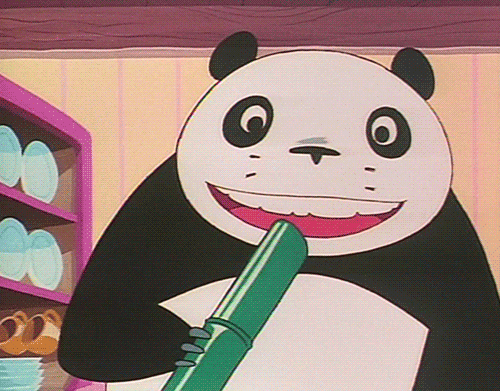
In 1988, Studio Ghibli had gotten off to a strong start. Their first two movies, Nausicaa of the Valley of the Wind (1984, technically animated at Topcraft, but created by the staff who would become Ghibli) and Castle in the Sky (1986), were both grand fantasy adventure movies. So both Totoro and Fireflies represented pretty large departures for the studio: for Takahata, it was his first time directing a full movie, and also a major break in terms of tone: a tragic realist war drama in a period when fantasy films were all the rage. For Miyazaki, it was a return to the more children-oriented works he’d made in his TMS days, but with his new extremely ambitious approach to animation. (Not everyone could, after all, rely on Yoshinori Kanada to take their key scenes!)
[Nausicaa, like Miyazaki’s previous The Castle of Cagliostro, can be placed within the broader trend of the rise of ‘bishōjo’ characters as an object of fan fixation, a subject I’ll be getting into when I write the next couple of posts in the evolution of the anime girl series but for now, see Watzky I guess!]
As much as these films seem incredibly different was that both centre on Japanese children in historical settings, and both deal in some way with death and grief. Miyazaki’s film represents a pastoral ideal of lost childhood in the countryside, overshadowed by the absence of a sick mother; the one crisis in the film comes when a child vanishes and everyone is afraid she might have drowned accidentally. Takahata’s film, meanwhile, follows children in the chaos of war in a fashion that can be compared Barefoot Gen (1983, Animation Night) - but this was Takahata’s big statement as a ‘realist’ director, and so aesthetically the approach it takes is quite distinct.

This is actually quite a significant occasion for me since, well, I haven’t actually seen Grave of the Fireflies! It’s one of the absolute biggest gaps in the Ghibli films I’ve seen. So to talk about it, I’ll have to turn to other writers. There is a fascinating article by Matteo Watzky which I keep coming back to, comparing the approaches of three ‘realist’ directors who work in animation - Satoshi Kon, Naoko Yamada and Takahata. In Watzky’s description, the ‘realism’ of Takahata, at least in this film, is a painfully beautiful approach to the way light falls on bodies and the detailed subtleties of acting, which are key to realising the film’s central symbol of a field of fireflies. Let me quote one of the most interesting passages from his essay:
Indeed, the set-up and its three layers (the flashback, the ghosts, and us the viewer) invite us to reflect not only on what’s happening, but on its consequences. The very choice of the medium of animation is also telling. Indeed, the moments when the choice of realism is the most striking is when we are shown close-ups of mutilated or dying bodies. One could argue that here, we are meant to witness the horror of war in detail and that realism is what makes us believe in what we see, and in turn react to it.
In fact, I’d say it’s the exact contrary. To understand this, we must reformulate my initial question : not “why realism ?” but “why animation, and not live-action ?” If this were live-action, we would indeed have no choice but to turn away our gaze in fear and horror (see, for example, the unbearable Hiroshima scenes in Shôei Imamura’s Black Rain). But since this is animation, these are just drawings and we know they are – which means that we don’t react to dead bodies as we would “real” people (that is actors) in agony. The distance created by the choice of the medium allows the gaze to be not pathetic or empathetic, but on the contrary, almost voyeuristic. There is indeed something profoundly upsetting about Takahata’s insistence on the degradations of the body, especially when said body is a young child’s. And I’d argue that this insistence is not meant to create pathos, but that it is cold and analytical – a study of death as it progresses in and on the body. This isn’t to say that Takahata is a sadistic director, who likes to torture his viewers with the sight of suffering : I believe that the distance created towards the pain on the screen invites the viewer to an even more critical look of Seita’s and Japan’s responsibility, and of Setsuko herself. Indeed, her dying body is not unbearable to watch – and precisely because of that, we have no choice but to watch, to be confronted to the utter horror that is her gratuitous death.
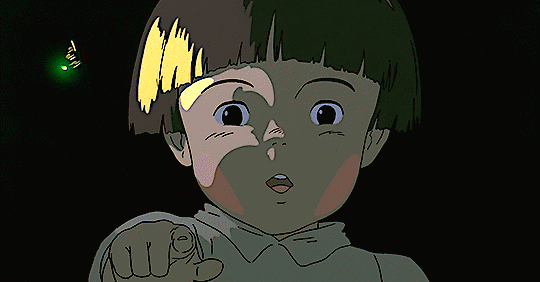
The same could be said of one of the movie’s climaxes and one of its most famous scenes – the fireflies sequence. We could say it is the culmination of the movie’s realistic aesthetic : the movements are slow and deliberate, the lighting is masterful and beautifully enhances the volume of the bodies – creating the all-important sense of presence. But at the same time, it’s the most unreal scene of the movie : the night setting, the overbearing music and the short-lived happiness all frame it like a dream. Even more importantly, the animation itself bears that contradiction : the light and shading on the bodies emphasizes the volume, but it does so to an unbelievably high degree, to the point that it feels like too much. We do forget that what we see are drawings, but what precisely are we seeing ? The two children look like real people as much as they do moving statues.
This way, Takahata, just like the two other directors I’m about to cover, doesn’t just follow the principles of realism. He either goes around them with the elaborate construction of a metanarration, or goes even deeper and surpasses realism at the same time that he’s following it. To put it in more abstract and energetic terms, he makes realism implode – that is, he destroys and transcends it from the inside.
So, what of the decision to place these two movies back to back? If Grave of the Fireflies takes such an approach to the responsibility of Japan for the deaths of these children, what does it mean to put it alongside Totoro? Does the contrast undercut the romantic setting of its companion film? Or do they complement each other, providing two different facets of the idea of ‘being a Japanese child’?
I’m honestly not sure, and that’s kind of why I want to recreate this double-bill: precisely to see the emotional effect of this unlikely combination (even if, of course, we can’t recreate the context of going to the theatre in Japan in 1988!). Of course rather than any artistic effect, part of the reason is financial: Ghibli was not yet at this point the juggernaut it became, so despite the difficulties of working on two films back to back, it was apparently judged the most profitable approach to direct two films at once.

Anyway, it’s about time I got started, but I wanted to make one last comment: Yoshinori Kanada (Animation Night 62, though god I need to give that one a proper writeup since it’s soooo cursory), the star ‘charisma animator’, returned once again, animating some of the most complex sequences of the film of the Catbus flying to the hospital. It’s interesting because the Ghibli models are quite a lot more complex than Kanada’s earlier preferences, although I think you can see some of that Kanada flair in the bus’s expressions, and of course he loooooved background animation and this sequence has plenty of that.
Even at this early stage in the lifespan of Ghibli, these films are also of course a statement in terms of character animation. Miyazaki and Takahata’s disdain for limited animation and the Mushi-pro lineage is infamous, and now with their own successful studio they finally had the ability to pour all the resources they needed into defining their own school. It’s not exactly Disney-like ‘full animation’, since it still made a certain use of the Kanada-school approach to lower framerates and expressive varied-tempo movement, and of course the layout system where animators are responsible for cuts rather than characters. But even so, Ghibli are quite distinctive within anime.
Their animation has a heavy emphasis on form - we come to understand Totoro through Mei’s physical interactions by bouncing on his belly. The way hair fluffs up, the detailed cel shading, the squashy mouths are all very distinctively recognisable as Ghibli hallmarks here.
And I think that’s all I have time to say. Why is there always such little time in the world? Oh, yeah, it’s because I stayed up all night writing about Umineko... 😅
Animation Night 111 will be live in just a minute, and films will start in maybe half an hour. Apologies, this is going to be running late again - hope you don’t mind staying up. We’ll lead with Grave of the Fireflies and follow up with Totoro - as brutal as it would be to go the other way around I think that’s probably the kindest option! So if you’d like to join, please drop in to twitch.tv/canmom sometime soon...
Edit: If you want to read something more substantial, I wrote a longer article comparing Grave of the Fireflies to two other films about children in the war, Barefoot Gen and In This Corner of the World! See here!
14 notes
·
View notes